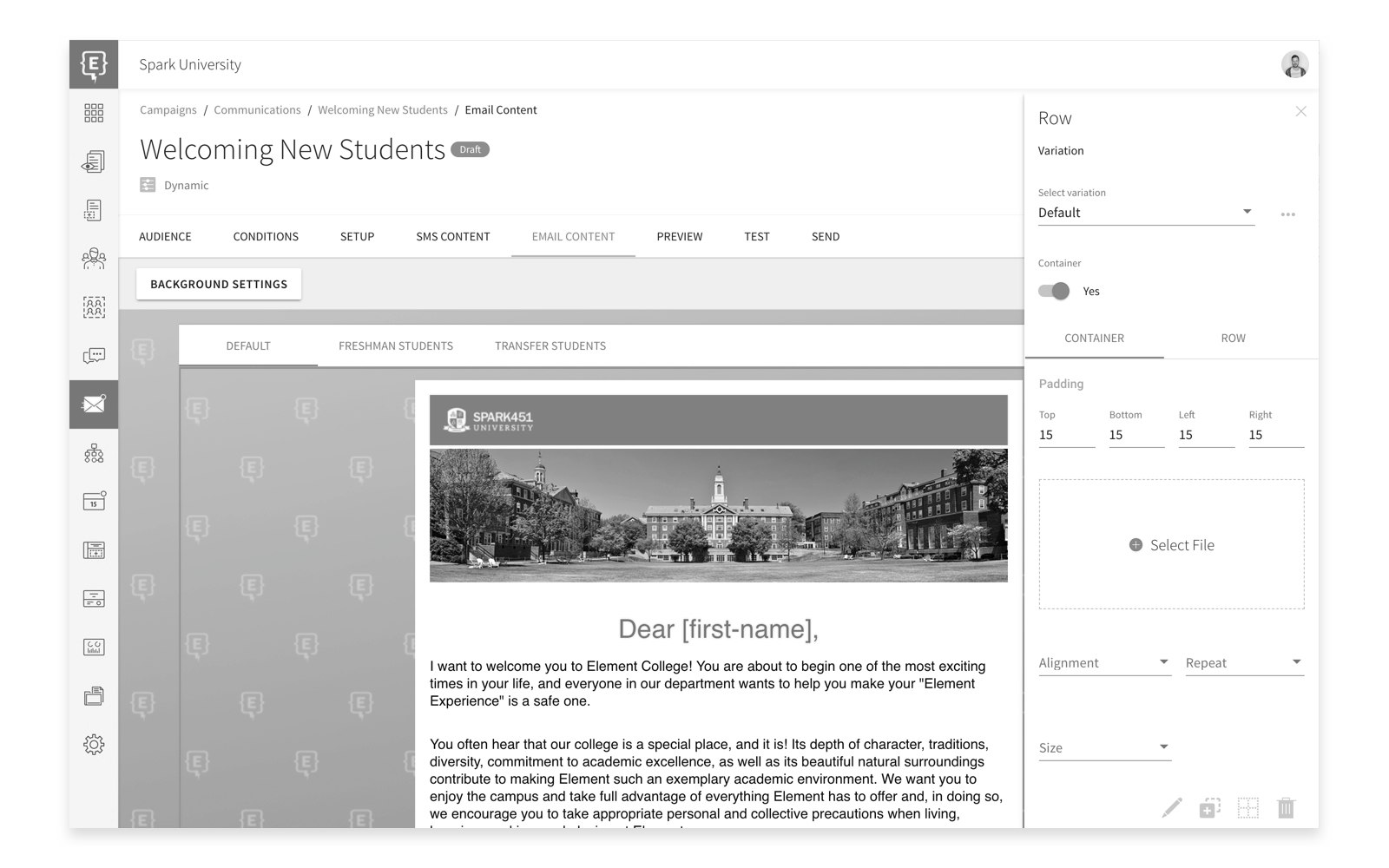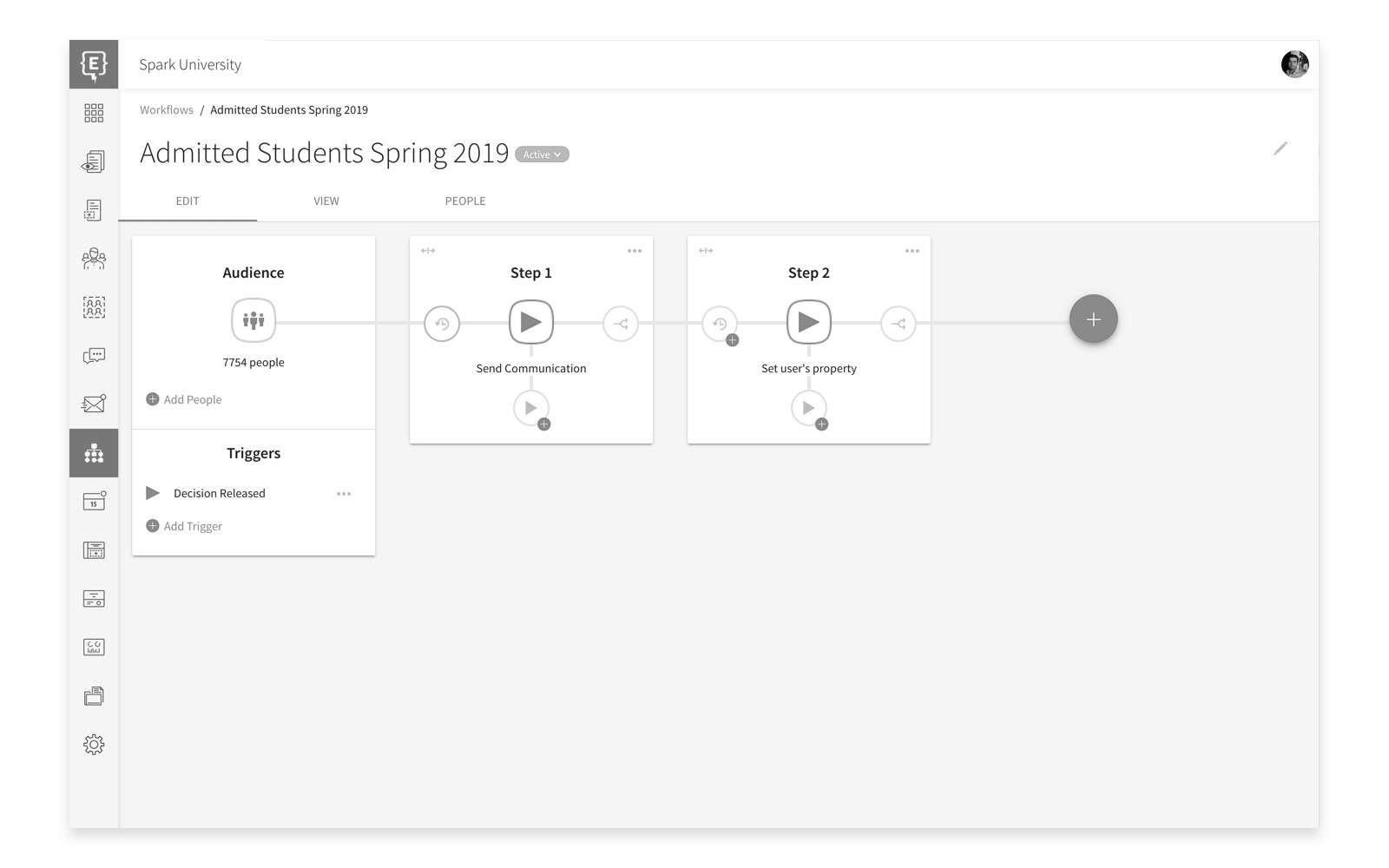Top CRM Terms Enrollment Managers Need to Know for 2019
by Erin Newton · Updated Apr 21, 2021
A helpful list for those new to CRMs for higher ed or on the lookout for features to expect soon.

If you’re new to the world of CRMs for college enrollment management, or if you want a head’s up on the features coming to a CRM near you, this list has you covered.
Some of these terms are about mainstays that you’ll find in any high-quality CRM. Others are examples of how CRMs are evolving to include new technology and serve the needs of modern admissions marketers.

Dynamic content
This is what makes personalization at scale possible. Say you’re creating an email campaign about academics. You’ll want to have content relevant to the major the recipient is interested in. But there’s probably academic-related content that’s of interest to prospects of every major.
Rather than build out a full email for each audience segment, dynamic content lets you single out the pieces of a message that should change based on who’s receiving it. For instance, the intro paragraph and header image for an engineering prospect will relate to engineering. The rest of the message — supporting paragraph, call-to-action button, signature, etc. — are the same for everyone. The CRM mixes and matches the content automatically depending on the segment receiving it.

Workflows
Workflows are the instructions that tell your CRM how you want automation to happen. They typically involve chains of triggers and actions and can be as simple as applying a label (e.g. prospect) to people who raise their hand by clicking a link in an email or as complex as managing full communication plans.
Rules
Like mini workflows, rules tell your CRM what to do when an event occurs. For example: an instant message comes through from someone on your school’s website. To make sure it’s routed to the counselor who can best answer it, you can have a rule that says to assign the question to a person on your team based on keywords or phrases in the message, like financial aid or dorms.
Artificial intelligence
In the context of CRMs, AI is about offloading some of the mental work of admissions onto software. Sorting through submitted applications is one example. It starts by setting criteria for things like SAT and ACT scores. As applications come in, your CRM routes an application based on how it matches up with the criteria. If scores fall at or above a threshold you set the application might move on to the next stage: being read by a human reviewer.
Predictive modeling
You might be familiar with predictive modeling already. Schools have been using it to predict who is most likely to apply and enroll for sometime. Like everything else, the digital age is transforming predictive modeling. With a CRM, for example, it’s now possible to not only compare historic records to current prospects and applicants, but to also look at real-time information like whether someone has opened a student search email or how far they are in their application. This gives a more complete picture of what action they may take.
Predictive modeling can be applied beyond applying and enrolling. For example, the number of people who are likely to attend an open house in a particular region. This type of information helps schools use their resources more effectively.
Engagement
This term is becoming more prevalent as the tide turns towards inbound marketing, which centers on providing useful information rather than traditional “salesy” advertising. Engagement is a measure of the level of interest someone has with your school. One indicator is how they interact with your communications. For example, do they open — or even better — click through your emails? How often do they visit your website or a landing page? Have they submitted a request for information form? What about liking your posts on social media?
Behavior scoring
This is the quantitative cousin to engagement. Behavior scoring gives a probability of how likely a person is to apply or enroll based on their level of engagement with your web properties, communications, application, etc. Like anything machine-learning, these indicators get better as you collect information from multiple recruiting cycles.
Fit scoring
Fit scoring is the more traditional way of determining the likelihood of someone applying or enrolling. It looks at things like demographics and test scores and compares that data from people currently in your funnel to people who have applied and enrolled in the past.
Data enrichment
Say you have only basic demographic information about your suspects and prospects. Data enrichment augments that information by adding things like engagement level and family income. With a fuller data profile your predictive modeling, for instance, can be more accurate.
Identity stitching
Stealth applicants — people who apply to a school but aren’t part of the prospect pool — are on the rise. They’re also a thorn on the side of enrollment managers aiming to make more data-driven decisions. Stealth applicants create big gaps in the data that’s used for things like predictive modeling.
Identity stitching offers a way to reveal the identity of stealth applicants. An example: a stealth student starts an application. They click a link in an email encouraging them to reference a page on the school’s website if they have questions about applying. That click provides data that can tie the now-known student to past visits they made to the school’s website.
Have questions about any of these terms? Want to know more about what they can do for your institution? Contact us: connect@element451.com

About Element451
Boost enrollment, improve engagement, and support students with an AI workforce built for higher ed. Element451 makes personalization scalable and success repeatable.
Categories
New Blog Posts

The Definitive Guide
AI in Higher Education
Bridge the gap between the latest tech advancements and your institution's success.
Useful Links

Talk With Us
Element451 is the only AI Workforce Platform for higher education. Our friendly experts are here to help you explore how Element451 can improve outcomes for your school.
Get a Demo






